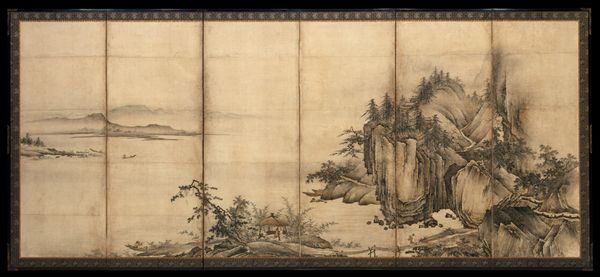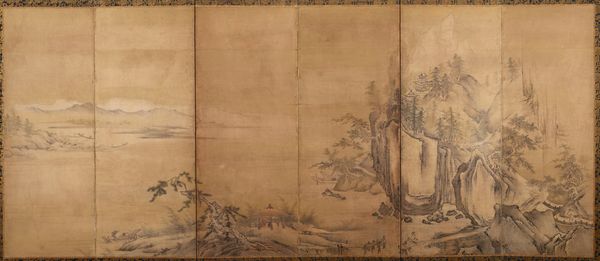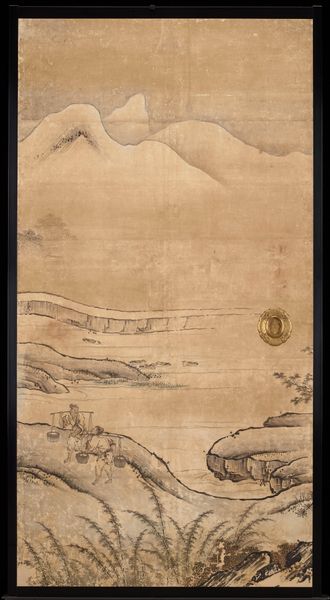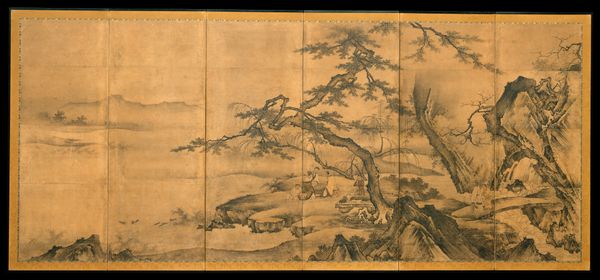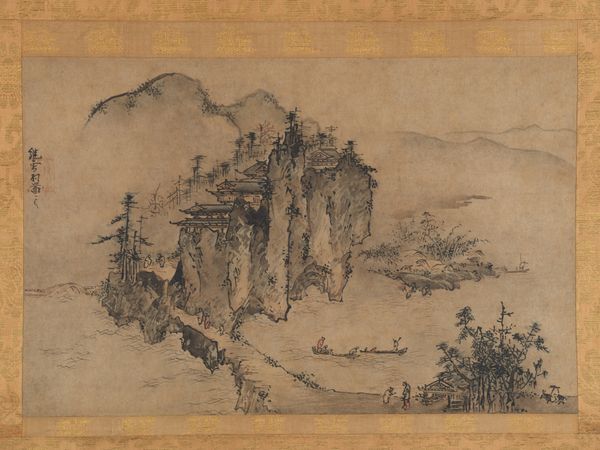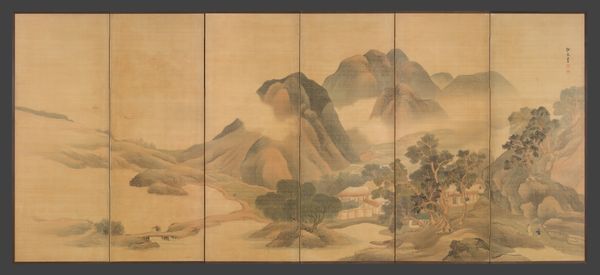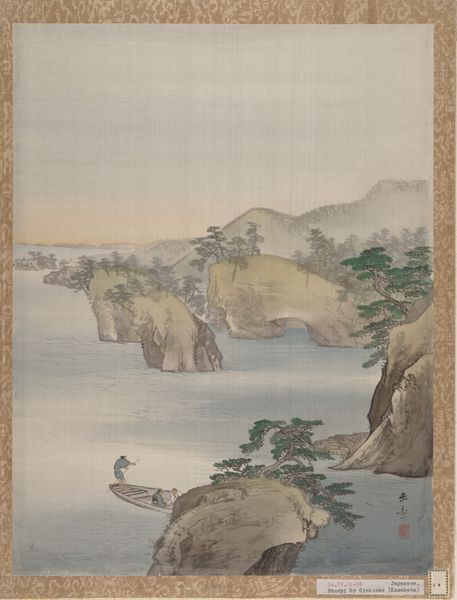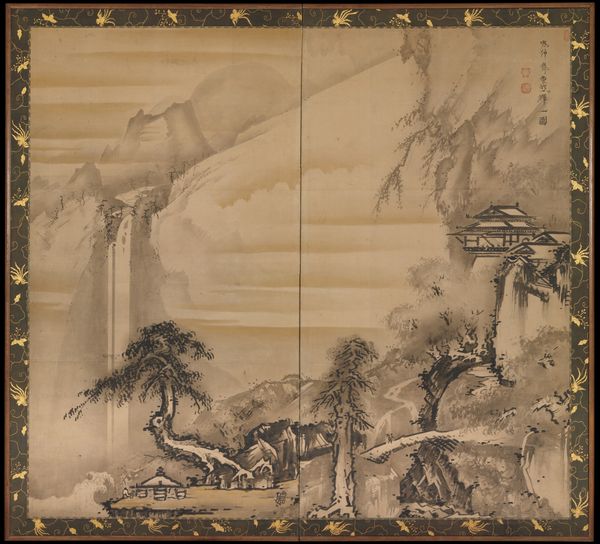
Dimensions: Image: 59 7/16 × 66 9/16 in. (151 × 169.1 cm)
Copyright: Public Domain
Curator: This is "Landscape," an ink and tempera painting on paper, created between 1700 and 1750 by Watanabe Shikō. It's currently held at the Metropolitan Museum of Art. Editor: It’s so delicate. The muted tones give it an almost dreamlike quality, and that single boat is just... adrift. There is loneliness. Curator: Indeed. The materiality speaks to its function within the Ukiyo-e tradition—literally 'pictures of the floating world.’ Mass production meant that many people could afford these screens; it democratized access to fine art while blurring the line between artisanal craft and 'high' painting. Editor: And in that ‘floating world,’ we can think about the economic conditions under which Watanabe Shiko worked. Who were his patrons? What societal roles did art such as this play? Was it simply escapism for the wealthy or did the landscape portray a deeper commentary on the natural world as Japan faced expanding urbanization and changing class structures? Curator: Certainly. The painting utilizes a technique known as yamato-e, emphasizing distinct outlines filled with flat color. The materials are also relatively accessible – paper, ink, and tempera instead of precious pigments, again pointing toward broader dissemination. Editor: Let's consider what the landscapes and the figure invite us to reflect on our sense of identity, location, and belonging. And to wonder about those who could not afford to sail or enjoy peaceful vistas, those structurally excluded from 'floating'. Curator: Precisely. Watanabe Shiko, through skillful execution, tapped into a visual language accessible across different social strata even as this very process further blurred class distinctions in material reality and cultural aspiration. Editor: Right. Ultimately this art demands that we situate our own perspectives on ‘landscape’ while interrogating the material and historical realities interwoven in ink. Curator: Absolutely. These screens, like 'Landscape', act as more than picturesque scenery – they serve as a tangible reminder of cultural exchange.
Comments
No comments
Be the first to comment and join the conversation on the ultimate creative platform.

